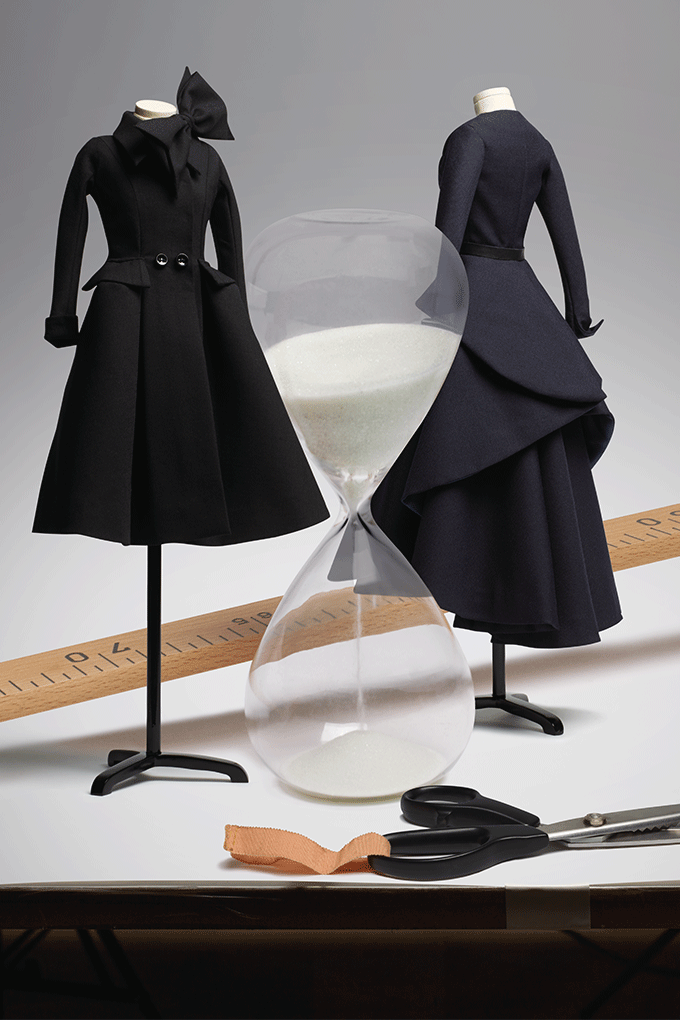Echoes Of Elegance: How The Past Shapes The Future Of Fashion

Timeless Craftsmanship: A Return to Fashion’s Foundations
Fashion today appears to be splintering in endless directions—bold, experimental, avant-garde, and frequently boundary-pushing. Yet, amid this creative chaos, a subtle but profound shift is taking place—a reverent return to the foundational house codes that shaped the industry’s most iconic brands. As we step into 2025, these enduring symbols of heritage and craftsmanship are reclaiming their place in the spotlight, reaffirming the roots that define true luxury.
Some of the world’s most celebrated fashion houses owe their prestige to the visual and stylistic language they have meticulously developed over decades. Take Chanel, for example. Coco Chanel’s revolutionary tweed jacket—a seamless combination of refinement and practicality—has become a defining symbol of the maison’s ethos. Over the years, its proportions and color palettes have been reinterpreted, but its essence remains timeless—a testament to Chanel’s dedication to craftsmanship and tradition.
Similarly, Christian Dior’s 1947 New Look forever reshaped women’s fashion. Defined by the Bar jacket and full skirts, the collection introduced a sense of opulence and femininity that sharply contrasted with the wartime austerity of the era. Under Maria Grazia Chiuri, these iconic designs continue to evolve, weaving narratives of empowerment and inclusivity into Dior’s legacy. The Bar jacket, with its modern reinterpretations, remains a cornerstone of the brand’s identity, striking a delicate balance between tradition and innovation.
At Louis Vuitton, the monogram stands as an emblem of its storied past. Originally conceived as a practical safeguard against counterfeiting, it has transformed into a cultural icon. Nicolas Ghesquière has masterfully reimagined the monogram, abstracting and modernizing it to resonate with contemporary audiences while preserving its heritage. Whether incorporated into new forms or creatively reinterpreted, it anchors the house’s narrative while offering fresh perspectives.
Prada’s identity, grounded in eclecticism and pragmatism, has always challenged convention. From its origins as a leather goods store to its evolution into a hub of intellectual design, Prada seamlessly merges utility with elegance. The iconic nylon bag, a standout since the 1980s, exemplifies this duality. Under Miuccia Prada and Raf Simons, contrasting materials and playful details continue to redefine sophistication.
Meanwhile, Hermès exemplifies restraint and artistry. The Kelly bag, a symbol of extraordinary craftsmanship, is less an accessory and more a work of art. Hermès prioritizes quality and technique over ostentatious branding, creating timeless pieces that transcend trends. Subtle refinements to the Kelly bag embody the maison’s philosophy of enduring excellence over fleeting novelty.
Reviving the Foundations: A 2025 Perspective
The spring/summer 2025 collections celebrate these foundational codes. Chanel’s Grand Palais showcase embraced its roots, highlighting raw tweed suits and feathered accents. These timeless elements, from the classic tweed jacket to tailored silhouettes, were reintroduced with authenticity, breathing new life into the maison’s legacy. Similarly, Dior paid homage to its origins with Greco-Roman influences. Reimagined Bar jackets and sporty bodysuits underscored Chiuri’s dedication to elegant femininity, while soft tulle gowns closed the show, nodding to Dior’s romantic lineage.
At Louis Vuitton, Ghesquière delved into the archives with Renaissance-inspired silhouettes and trunk-handle footwear. Collaborations with artist Laurent Grasso celebrated Louis Vuitton’s heritage as a travel brand, marrying its pioneering spirit with modern artistry.
Rather than dramatic reinvention, these collections reaffirm the power of continuity. By revisiting their roots, these brands demonstrate that the most innovative act can often be a return to the essence of what originally defined them—standing confidently at the crossroads of nostalgia and modernity.
Why Roots Matter in Modern Fashion
This renewed focus on house codes carries profound significance in today’s fast-paced, trend-driven world. It’s about authenticity, trust, and connection. For consumers, investing in these timeless elements—whether it’s a Chanel tweed jacket or an Hermès Kelly bag—means owning a piece of history, artistry, and values that transcend seasonal trends. It’s the antithesis of disposable culture, inviting buyers to participate in a legacy rooted in excellence.
The arrival of new creative directors adds an exciting dimension to this evolution. Michael Rider at Celine heralds a return to minimalist elegance, shifting away from Hedi Slimane’s youthful rebellion. Rider’s vision bridges the brand’s understated origins with a fresh perspective for discerning clientele. At Chloé, Chemena Kamali expands on the house’s romantic, bohemian DNA, infusing it with inclusivity and rich storytelling. Meanwhile, Valentino under Alessandro Michele blends haute couture with exploration, merging historical elements with bold, forward-thinking designs.
These changes signal a broader shift in the industry—a conversation about respecting heritage while embracing the future. Creative directors today must be both historians and visionaries, preserving the soul of these storied houses while ensuring they remain relevant. Whether it’s Rider’s pared-back approach at Celine or Kamali’s modernized bohemia at Chloé, these leaders embody the delicate balance of honoring tradition while paving new paths.
The Enduring Power of Fashion’s Foundations
This return to house codes reflects a deeper commitment to artisanship, purpose, and authenticity in fashion. By anchoring their designs in heritage, these visionaries craft narratives that feel both timeless and trailblazing. In an industry often consumed by the pursuit of the next big thing, those who remain true to their roots stand out with clarity and purpose.
It’s a reminder that sometimes, the most forward-thinking innovation begins by looking back—balancing the excitement of new ideas with the structure of timeless tradition.

